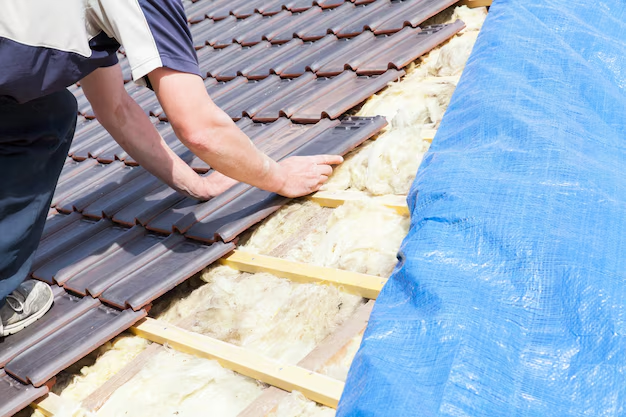Discover the True Cost of Roof Replacement—And Financial Aid Options
A roof replacement is a significant home improvement project. It’s the shield that protects your castle from the elements, and when it's worn out, replacement becomes unavoidable. But how much does a roof replacement really cost, and are there financial options to help ease the burden? Here's a straightforward guide to understanding the costs and resources available to aid in your roofing journey.
What Influences Roof Replacement Costs?
Several factors influence the cost of replacing a roof, making it crucial for homeowners to understand these variables to plan their budget effectively:
- Roof Size and Pitch: Larger roofs require more materials and labor, while steeply pitched roofs can complicate the job.
- Material Choice: Asphalt shingles, metal roofing, clay tiles, and slate come at different price points, with asphalt typically being the most economical option.
- Labor Costs: These can vary greatly by location, the contractor's experience, and the complexity of the job.
- Required Repairs: Sometimes, replacing the roof uncovers structural issues or damage that need fixing, adding to the overall cost.
Generally speaking, the cost of a roof replacement can range from $5,000 to over $20,000. It's advisable to get multiple quotes and factor in unexpected expenses by setting aside an extra 10-15% of your budget.
Financing Your Roof Replacement
Roof replacement often represents a substantial financial commitment, but several options can make it more manageable:
- Home Equity Loans: Use your home as collateral to borrow a lump sum, generally with favorable interest rates.
- Personal Loans: Unsecured loans that offer flexibility but may have higher interest rates compared to home equity loans.
- Credit Card Financing: Involves higher rates; best for smaller projects if you can pay off the balance quickly.
- Contractor Payment Plans: Many roofing contractors offer financing solutions tailored to your budget.
Look for Government and Local Assistance Programs
Homeowners should also explore whether government aid programs or local assistance is available. Here are a few avenues to consider:
- Weatherization Assistance Program (WAP): Provides low-income households with services to improve energy efficiency, including roofing repairs and upgrades.
- State Assistance: Many states offer grants or low-interest loans for energy-saving home improvements, which can sometimes include new roofing.
- Local Nonprofits: Organizations like Habitat for Humanity may offer home repair services for qualifying individuals.
Take Advantage of Tax Credits and Rebates
Tax benefits are often available for eco-friendly roofing systems:
- Federal Tax Credits: In the U.S., federal tax credits are sometimes available for installing energy-efficient upgrades.
- Rebates from Utility Companies: Your local utility might offer rebates for installations that improve energy efficiency.
Embrace Education and Planning
If financial assistance options seem overwhelming or unattainable, consider looking into educational resources or grants that teach about managing home improvement finances. These programs can provide advice on budgeting, planning, and prioritizing essential home renovations.
🎯 Financial Assistance and Credit Options Summary
- 🏡 Home Equity Loans: Lower interest, but your home is collateral.
- 💳 Credit Cards: Quick but pricey if not paid off promptly.
- ⚒️ Contractor Financing: Convenient but vet the terms carefully.
- 🌞 Weatherization Assistance Program: Ideal for qualifying low-income homes.
- 📜 Federal Tax Credits: Save more with energy-efficient upgrades.
- 🌿 Rebates and State Programs: Check your eligibility for local aids.
- 🎓 Educational Grants and Resources: Informational guides to better manage home finances.
